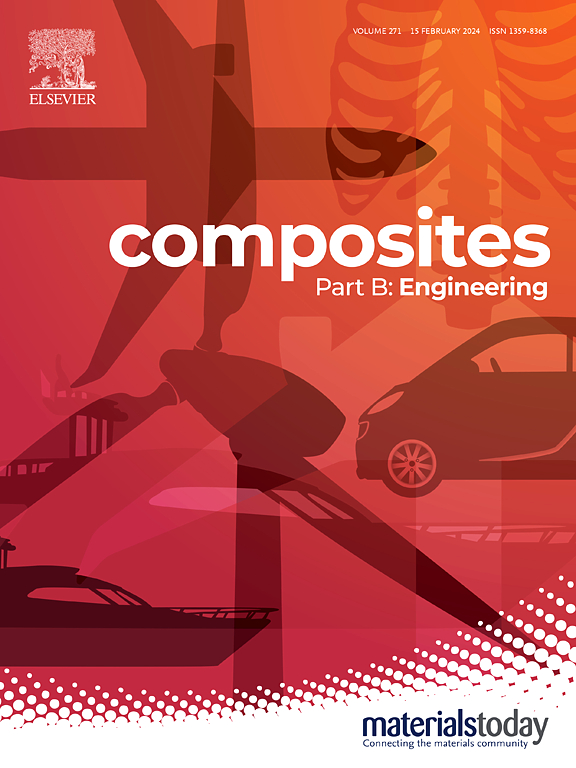ZIF-67 templated synthesis of sea urchin-like P–Co3S4@CdS nanocomposite for enhanced H2 production and dye oxidation under solar light: Role of P-doping on cocatalyst property of Co3S4
IF 12.7
1区 材料科学
Q1 ENGINEERING, MULTIDISCIPLINARY
引用次数: 0
Abstract
Photocatalytic hydrogen production from water using solar energy is a promising approach for addressing the global energy crisis. Traditional semiconductor photocatalysts, such as CdS, face challenges such as high charge recombination rates and limited active surface sites, which reduce their efficiency. To address these issues, a heterostructured composite photocatalyst of P-doped Co3S4 quantum dots (QDs) on CdS (P–Co3S4@CdS) was developed in this study. This composite exhibits significantly enhanced hydrogen production, achieving a rate of 373.56 μL h−1, outperforming pristine CdS by 27 times and P–Co3S4 by 221 times. Furthermore, the P–Co3S4@CdS composite simultaneously produces hydrogen and degrades 12 different dye pollutants in wastewater. Phosphorus doping in Co3S4 facilitates electron delocalization, lowers the energy barrier for hydrogen evolution reactions, and enhances performance. The S-scheme heterojunction between CdS and P–Co3S4 promotes efficient charge separation, whereas phosphorus incorporation increases the electrochemically active surface area, exposing more catalytic sites. These factors collectively improved the charge transfer, enhanced the reduction potential, and improved the hydrogen production efficiency of P–Co3S4@CdS. The results of this study demonstrate the potential use of abundant and low-cost materials (i.e., Co3S4) combined with phosphorus doping for enhanced photocatalytic hydrogen production and oxidative removal of dyes from wastewater.

求助全文
约1分钟内获得全文
求助全文
来源期刊

Composites Part B: Engineering
工程技术-材料科学:复合
CiteScore
24.40
自引率
11.50%
发文量
784
审稿时长
21 days
期刊介绍:
Composites Part B: Engineering is a journal that publishes impactful research of high quality on composite materials. This research is supported by fundamental mechanics and materials science and engineering approaches. The targeted research can cover a wide range of length scales, ranging from nano to micro and meso, and even to the full product and structure level. The journal specifically focuses on engineering applications that involve high performance composites. These applications can range from low volume and high cost to high volume and low cost composite development.
The main goal of the journal is to provide a platform for the prompt publication of original and high quality research. The emphasis is on design, development, modeling, validation, and manufacturing of engineering details and concepts. The journal welcomes both basic research papers and proposals for review articles. Authors are encouraged to address challenges across various application areas. These areas include, but are not limited to, aerospace, automotive, and other surface transportation. The journal also covers energy-related applications, with a focus on renewable energy. Other application areas include infrastructure, off-shore and maritime projects, health care technology, and recreational products.
 求助内容:
求助内容: 应助结果提醒方式:
应助结果提醒方式:


